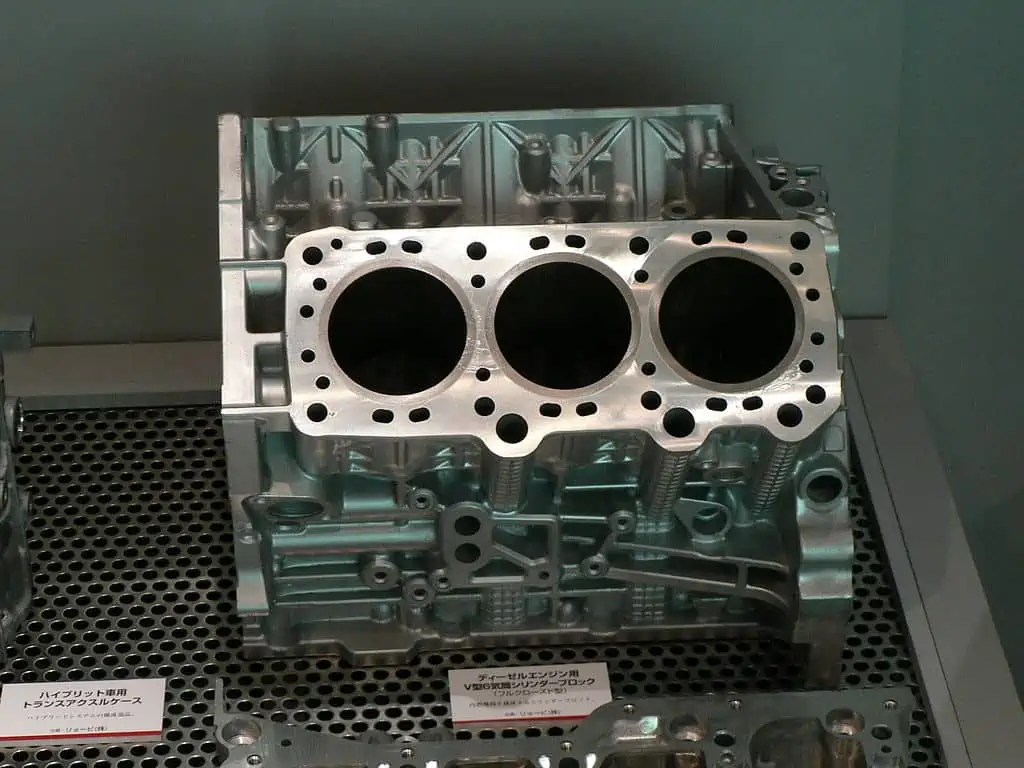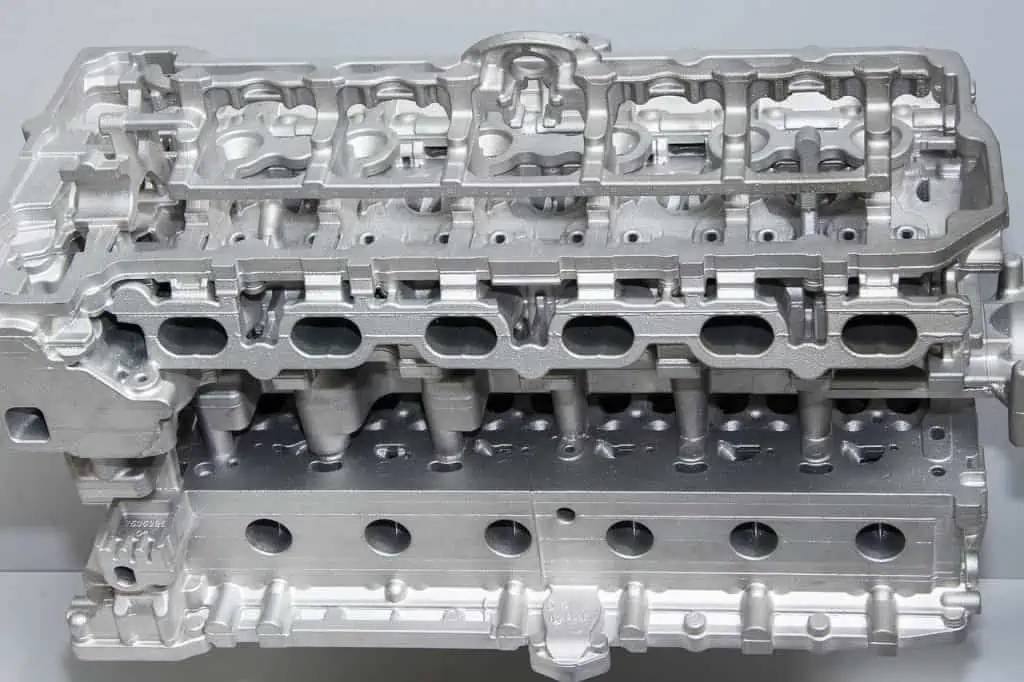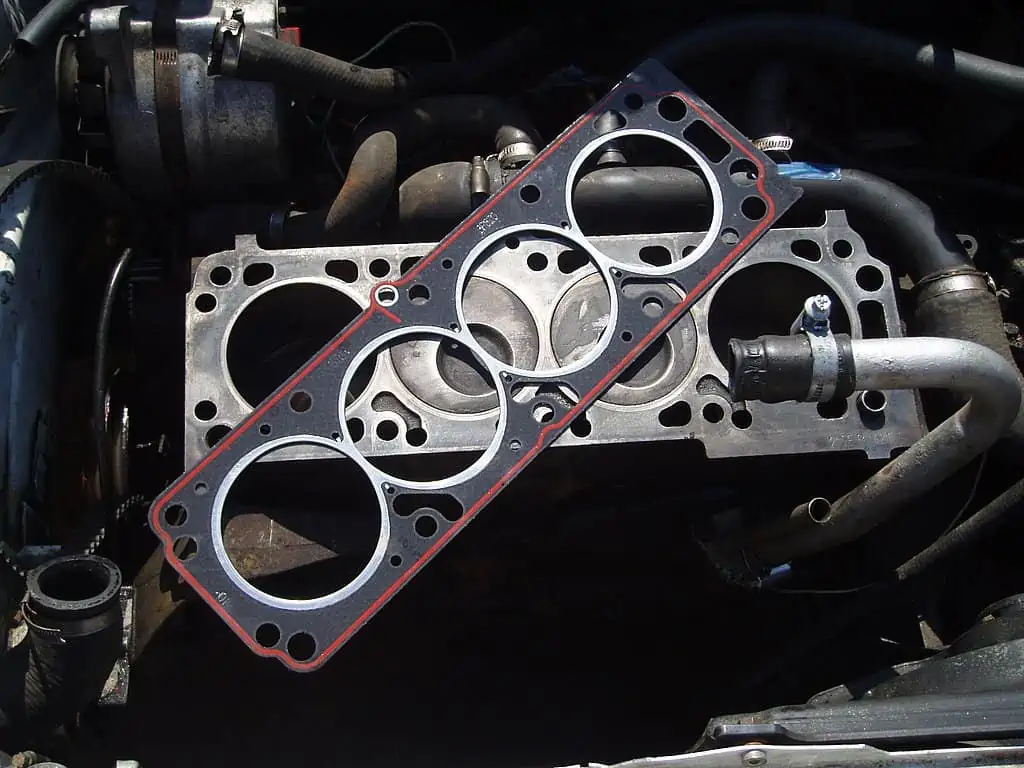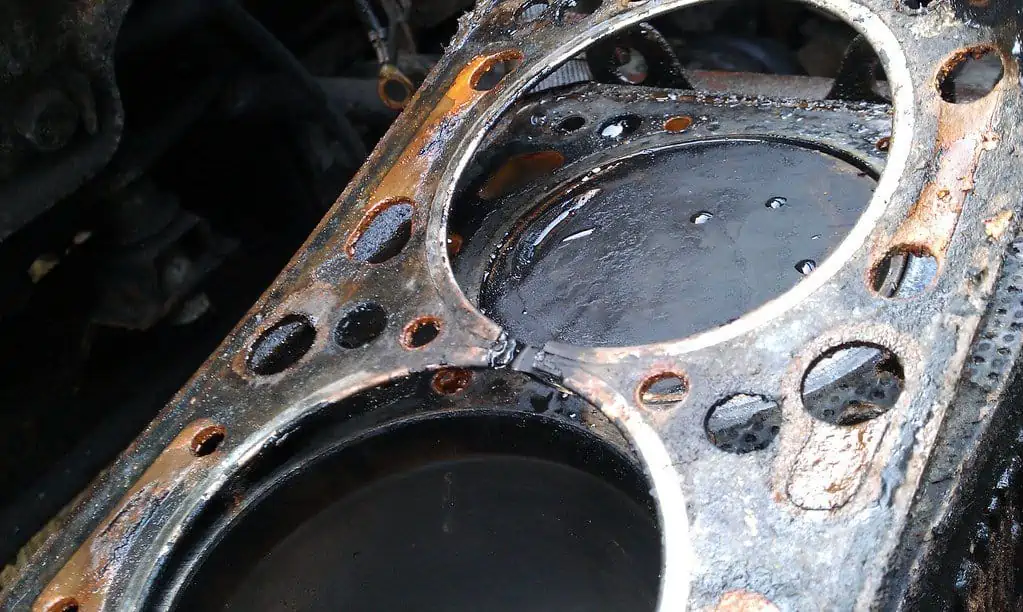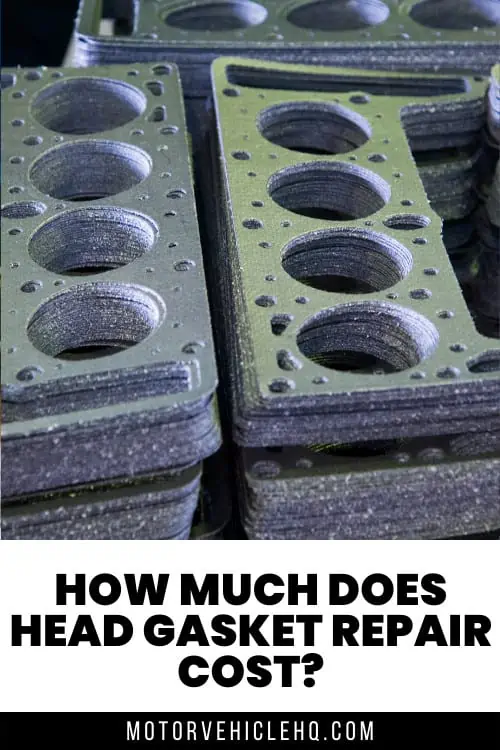A damaged head gasket has a slew of negative consequences, and you’ll need to get it fixed. But how much does the head gasket repair cost? Continue reading to learn everything there is to know about replacing a head gasket.
Head gaskets are vital components of your car’s engine, as they connect the exhaust manifolds to the block.
Your engine would be unable to function correctly without these gaskets. These gaskets can deteriorate, and you’ll notice when they do.
Repairing a head gasket may be expensive. This might often mean that purchasing a new automobile rather than having an old car fixed is a more convenient and cost-effective option.
Not only are head gasket replacement supplies costly, but so is the labor, which is both required and critical.
What Is a Head Gasket?
The head gasket is located in the space between the cylinder head and the engine block.
This small but important component seals the internal combustion system, enabling coolant and oil to flow all through the engine to cool and lubricate it.
As a result, if it blows, the engine may be in serious difficulty. The symptoms of a blown head gasket are simple to recognize, and they must be addressed as soon as possible to avoid engine damage.
A full-closed cylinder block by 160SX / CC BY-SA 3.0
The head gasket is an important part of any combustion engine. The head gasket keeps the pressure caused by the ignition of gasoline vapors by the spark plug within the combustion chamber.
The pistons are contained in the combustion chamber, which requires a lot of pressure to keep them firing properly.
Furthermore, oil and coolant have similar functions, but they cannot be mixed to accomplish their duties effectively. The head gasket separates the chambers to prevent fluid cross-contamination.
What Causes a Blown Head Gasket?
High heat and high pressure are the most common causes of a blown head gasket. The head gasket keeps your engine together, which is enough to cause a nervous breakdown in anyone.
Fortunately, the head gasket is a durable component. It’s expected to last about 200,000 miles, so you may never need to replace the head gasket.
What Is Head Gasket Repair?
Head gasket repairs necessitate the removal of an engine’s head. The ordinary do-it-yourselfer will not be able to replace a head gasket. While it’s unusual for a head gasket to fail due to age, it typically signifies that everything else has worn out and has to be replaced as well.
By removing the engine’s head and gazing within, you could find that everything else has also been cooked. The easiest approach to avoiding head gasket failure is to ensure that the cooling system is in good operating condition and that the engine is tuned and running properly.
A $5 thermostat or $3 coolant hose failure can quickly cost thousands of dollars in engine damage.
A Head Gasket Repair Cost
The cost of repairing a head gasket differs. The typical price range is $1,500 to $1,800. It might be as much as $2,500 for more sophisticated engines.
A head gasket replacement is usually among the most costly automobile repairs. This is due to the head gasket’s location in the engine bay, rather than the head gasket itself.
The engine needs to be dismantled because of its strategic placement. This might take several hours, making the repair extremely time-consuming.
Lancia Beta Saloon head gasket by Tony Harrison / CC BY-SA 2.0
This is not a job for a novice or an ordinary technician. As a result, if you believe your car has a damaged head gasket, experts recommend bringing it to a specialist.
Depending on the automobile type, a new head gasket costs between $100 and $200. Labor costs are the most significant expense.
Depending on the automobile type and other criteria, the cost of labor will vary significantly. Labor costs should range from $900 to $1,500.
The Average Cost of Head Gasket Repair
Here’s a quick rundown of the expenses of repairing a blown head gasket:
- A head gasket can cost anything from $100 to $200, not including labor.
- Labor charges for replacing a head gasket range from $1000 to $1500, while the cost of the parts varies between $715 and $832.
- The average cost of repairing a blown head gasket can range from $1500 to $2500, including labor.
If a head gasket problem is detected early, the cost of repair is lower. In most circumstances, the cost of replacing a head gasket is lower when the problem is caught early on, as it is with most other problems.
Because the condition hasn’t had time to worsen, if you catch it early enough, it won’t be as bad. As a result, a head gasket leak repair is usually less expensive than a complete Subaru head gasket repair.
Early repairs will allow you to learn how to repair a blown head gasket without having to replace it. This eliminates the possibility of a yes answer to the question of whether or not a head gasket may leak oil.
It also cuts down on the expense of replacing the intake manifold gasket or the entire intake manifold.
Remember that replacing an engine costs more than repairing a leaking head gasket. The labor cost of replacing an engine is also more expensive than repairing a failing head gasket.
A damaged head gasket by Collard / CC BY-SA 3.0
Is a Blown Head Gasket Worth Repairing?
The repair of a head gasket is a vital car service. The time necessary for the repair is the main reason why repairing a head gasket is such a costly procedure, charging more than $2,000 in certain situations.
Every car is somewhat different, which means that putting the car together involves a varied amount of effort for each engine.
There are choices available if the expense of repairing a blown head gasket seems excessive. You may wish to replace the head gasket if your automobile is generally in good condition and is relatively recent.
A damaged head gasket repair, on the other hand, might not be the best option in some cases. Here are a few examples of when changing head gaskets isn’t the best option:
- Excessive gasket costs for your specific vehicle
- There isn’t a reputable head gasket repair shop within driving distance of my home.
- Your automobile is a classic.
- You don’t have enough money to cover the typical cost of replacing a head gasket.
- You were planning on getting a new automobile anyhow.
- You don’t want to have to deal with replacing the head gasket.
A damaged head gasket is generally worth repairing. While the typical repair costs $1,500, it is usually significantly less than the cost of a new automobile.
If your car is older and has other issues, though, it may not be worth spending too much money on it. Perhaps instead of selling your automobile, you might consider purchasing a new one.
Which Head Gasket Repair Product Is Best?
There are several highly recommended gasket repair products available. The greatest head gasket fixer and repair sealer, as per a nationally reputable source, is from the Steel Seal brand.
It is praised for being simple to use and adaptable to both diesel and gasoline engines. The Steel Seal brand, especially the ST5516 HD model, provides the best value for a gasket sealing solution.
What Accounts for the High Cost of a Blown Head Gasket Repair?
Labor expenses, like any costly auto repair, are the primary factor. Although the item itself is inexpensive, repairing it can take up to ten hours. Accessing your head gasket is quite tough because you must remove the engine to conduct the repair.
This would take a long time, and reassembling it would take much longer. As a result, the high cost of labor is to blame for the high cost of head gasket repair.
If your car is older, replacing the head gasket may not be worth the money. Get various head gasket replacement quotes and compare them to the worth of your automobile.
If the value of your automobile is less than the cost of repairs, you may need to explore another alternative, such as calling a scrap car buyer.
Repairing a head gasket may be expensive. This might often mean that purchasing a new automobile rather than having an old car fixed is a more convenient and cost-effective option.
Not only are head gasket replacement supplies costly, but so is the labor, which is both required and critical. Around the house, there are a few items that need to be fixed.
Because of the intricacy and time involved with the procedure, blown head gaskets are quite costly. A head gasket is not costly in and of itself, with costs as low as $100 in some circumstances.
This repair, on the other hand, may take a technician 10–20 hours to accomplish. Because labor expenses range between $75 and $150 per hour, the time adds up when estimating the repair charge.
How Can I Keep the Cost of Repairing My Head Gasket Low?
We’re sorry to disappoint you if you were hoping for a do-it-yourself option. Without the right expertise and experience, you should not undertake a head gasket repair.
The expense of the repair is high enough without you adding to it. There are, however, a few things you can do to keep your head gasket repair costs low.
- Keep track of your vehicle’s maintenance. A regular maintenance program keeps your automobile in peak shape and helps you avoid difficulties.
- Check your engine for the warning signals listed below regularly, and schedule a head gasket replacement if any are discovered.
- If you suspect an engine problem, you should immediately stop driving. Don’t exaggerate the expense of a blown head gasket by inflicting significant damage!
How Long Does a Blown Head Gasket Take to Repair?
The timeframe it will take is determined by several things that your auto mechanic will not be able to determine until the engine has been evaluated.
They must determine if the present head and block can be repaired. If the gasket causes substantial damage to other elements of the engine, the repair period might be longer than simply replacing the gasket.
A head gasket by Collard / CC BY-SA 3.0
The amount of time and money required is determined by the location of the gasket in the engine. Because the head gaskets are in the heart of the engine, qualified auto technicians will need time and patience to reach them.
Many additional components, such as the power steering pump, the alternator, the exhaust manifolds, and the intake, must be removed and inspected for damage.
Smaller parts, such as bolts, nuts, cables, sensors, and so on, might be corroded, broken, or frozen, making removal difficult, time-consuming, and complicated.
After all of the parts and components have been removed, detaching the head is a difficult task that demands accuracy and knowledge of how to correctly remove and reinstall the pieces.
Whether the engine is overhead cam or pushrod, the timing must be regulated to guarantee that no damage to the valves or pistons occurs during the reassembly process.
Once the mechanic has a clear view of the head and block, he or she may estimate how long it will take to repair the gasket or any other damaged components.
To answer the question of how long this will take, it will depend on the car type and the extent of the engine’s internal damage. A blown head gasket may be fixed at your car repair business in two days to two weeks.
Is it Safe to Drive with a Blown Head Gasket?
While driving with a damaged head gasket is technically feasible, it is not advised. You’ll notice a considerable reduction in power after the seal is blown, and you’ll also notice a considerable reduction in horsepower.
Your engine is far more prone to overheating if your damaged head gasket is producing coolant leakage. Your engine will break and be damaged even more as a result of this.
When motor oil and coolant combine, the oil becomes diluted and no longer provides the same degree of lubrication, perhaps causing irreversible damage.
The most common symptom of a blown head gasket is a minor crack. If not addressed appropriately, the fractures will expand over time, resulting in more damage and more expensive repairs. This is why a broken head gasket should never be driven!
Because a head gasket serves as a seal, if it fails, your engine’s pressure will drop immediately. The piston in the combustion chamber will not fire with force as a result of this loss of pressure, and you will notice a considerable reduction in power.
To grasp why driving with a damaged head gasket is a bad idea, you must first understand what is happening within your engine.
Although some automobiles will stop right away if the head gasket explodes, others will be able to withstand the damage a few more times. Driving with a burst head gasket, however, is not worth the risk due to the risks it brings.
What Is the Procedure for Repairing a Head Gasket?
Keep in mind that head gasket replacement projects and prices are straightforward. Because so much breakdown and reassembly are involved, it is frequently a process that takes a long time.
Lancia Beta Blown Head Gasket by Tony Harrison / CC BY-SA 2.0
The following is a common strategy for repairing a head gasket:
- Determining whether or not the head gasket is blown or damaged.
- Removing the engine’s coolant and oil
- Taking off the cylinder head and all of its parts
- The components are inspected and cleaned.
- The head gasket must be removed.
- Examining the whole engine block for signs of wear and tear
- Applying the proper sealant to the new head gasket
- Check that the cylinder head and other components have been placed correctly and according to the original specifications.
- Adding new oil and coolant to the engine
- Start the engine to see whether there are leaks or other problems.
- Vehicle evaluation on the road
Final Thoughts
Your head gasket is an important component of your engine, and its failure can result in oil leaks, overheating coolant leaks, and other problems.
While your automobile may drive with a minor leak in the gasket, when the head gasket is entirely blown, it will be obvious.
You should not drive your car in this state. You should get it examined by a certified technician as soon as possible.
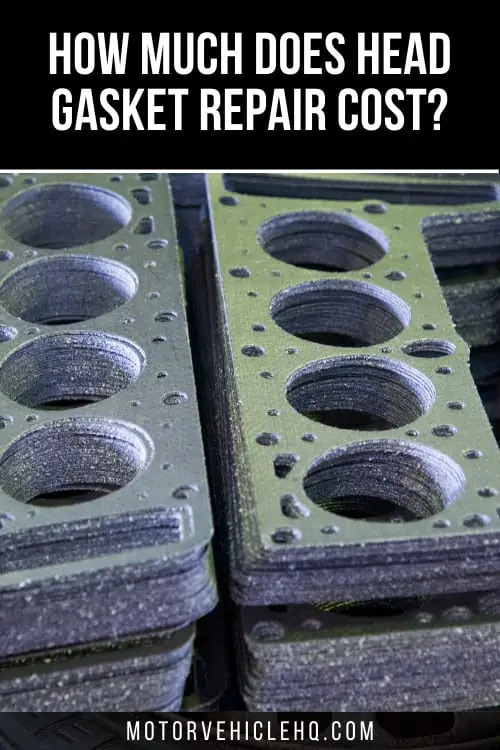

Jim Wicks is the founder of MotorVehicleHQ. With over two decades of experience in the automotive industry and a degree in Automotive Technology, Jim is a certified car expert who has worked in various roles ranging from a mechanic, car dealership manager, to a racing car driver. He has owned more than 20 cars over the past 15 years. Ask him about any vehicle you see on the road and he can tell you the make, model and year. He loves the aesthetics of all things cars, and keeps his vehicles in pristine condition.
In his free time, Jim enjoys getting his hands dirty under the hood of a classic car or taking long drives along the country roads. His favorite car? A 1967 Shelby GT500, a true classic that, according to Jim, “represents the pure essence of American muscle.”
